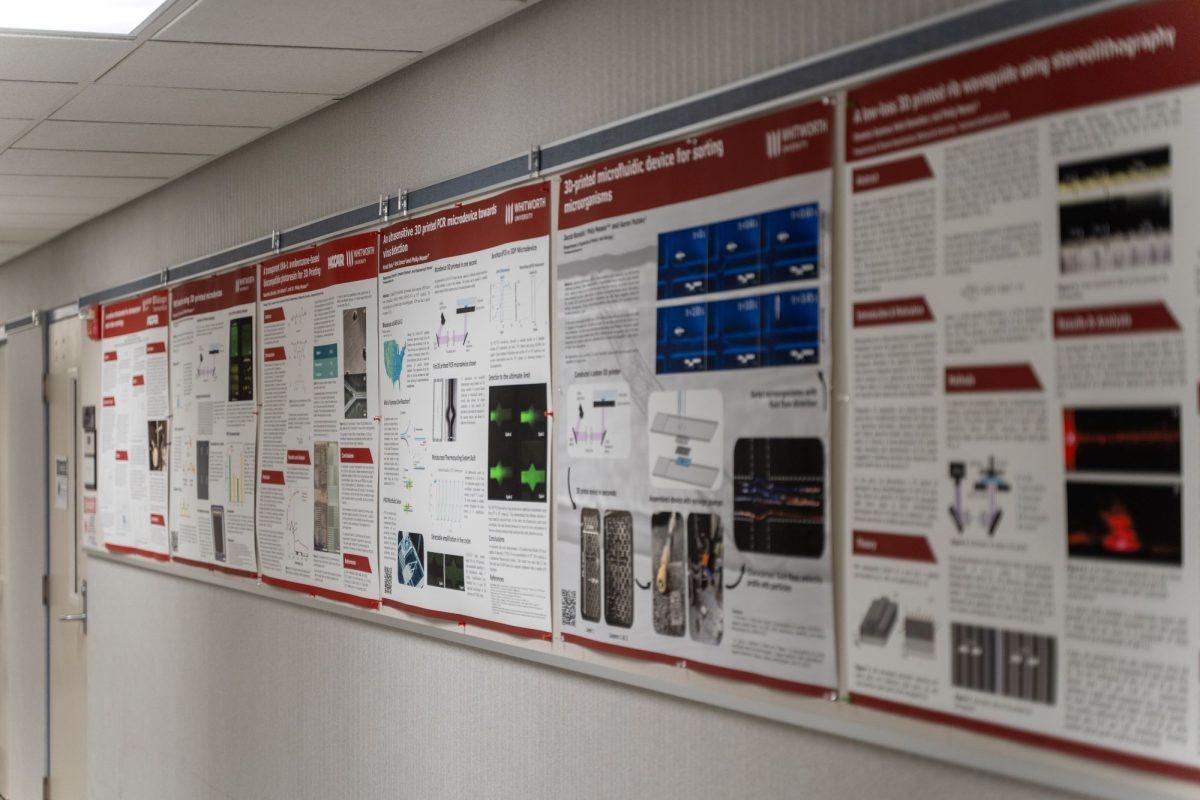Although a recent federal study shows women outpacing men in college enrollment and graduation rates at all academic levels, the report also reinforces prevailing data on the existence gender inequality for working women.
Federal data shows females will soon make up the majority of the workforce but the percentage of women working in high-wage fields traditionally dominated by men like management, business, finance, science, technology and engineering remains low.
The findings are part of a comprehensive report released Tuesday by the White House called “Women in America.” The report is a compilation of pre-existing data documented by various federal agencies outlining the state of income, education, employment, health and violence for American women.
“Our culture has denoted [certain industries dominated by masculinity] as occupations that are good for men,” said Julie Kmec, labor and gender inequality expert at Washington State University. “[The idea is people are told] men are good at science and women are good at writing English papers.”
Some women working in male-dominant industries experience added pressures and feel unwelcome, said the associate professor of sociology.
The U.S. Women’s Bureau reports 25 percent of the most common jobs for women in 2009 were in some type of top-level or managerial positions while the majority fell in areas most identified with feminine qualities like secretarial and administrative assistant positions.
The White House report confirms the trend and claims women are three times more likely than men to be concentrated in traditional female occupations like secretaries, health care and teachers.
Even though women’s wages have improved relative to men’s since the 1970s, data shows women today makes less then men. The areas of study women most likely pursue partially explains for wage discrepancies.
“One reason is that [women] are not going into the kinds of fields that are high income producing,” said White House Senior Adviser Valerie Jarrett in an ABC World News interview.
More than 60 percent of female graduates are in the fields of humanities, art, education, and health and welfare. Conversely, just 25 percent of graduates in science and technology were women.
Employed mothers face additional challenges of fulfilling traditional roles at home while juggling work duties and also explains why women make less.
Bodies of research conclude mothers are paid less than fathers and non-parents even when they work the same hours, Kmec said.
Cultural expectations of the ‘ideal’ worker and the ‘ideal’ mother are at odds,” according to a 2010 study by Kmec published in Elsevier’s Social Science Research.
Yvonne Newman, a mother of three, spent years supporting three children as a single parent relying heavily on state aid totalling more than $9,000 a year in addition to her $10.50 per hour entry-level job at Costco in Spokane.
“I know a lot of single moms in this company who work evening shifts that have to rely on other people to take care of their kids because they have to close,” Newman said. “If you’re on the lower end of the totem pole, you get the crappy shifts.”
By 2007, Newman lost all government funding due to a pay increase that left her $1.00 over the limit to receive aid. The financial blow left her unable to cover the costs for daycare services and food that the government had taken care of, leaving her family temporarily homeless in 2007.
Recently remarried, she said she is fortunate to now hold a mid-level marketing position for Costco that pays double her earnings and offers better shifts.
“By and large it’s very hard for working mothers to make it,” Newman said.
Studies have found some mothers experience wage penalties by having children and the Labor Department confirms that working mothers earn less in the same jobs occupied by men.
“It really creeps [employers] out how [a working mother] can be so good at her job,” Kmec said.
Although Costco is an Equal Employment Opportunity business, Newman said certain jobs might require responsibilities that are not fit for working mothers.
“Sometimes the needs of the business doesn’t meet the needs of the employee, whether you’re a working mother or college student,” Newman said.






A juggling act for women « Digital Journalist • Mar 8, 2011 at 11:03 pm
[…] Editor’s note: the story was originally published on the March 8 issue of The Whitworthian. The story is also available online. […]